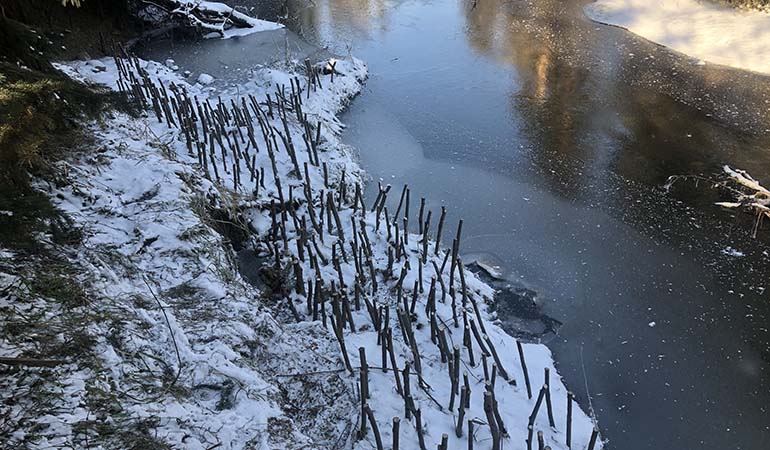The Blackmud Creek represents a highly valued destination for the residents of Edmonton – local families to experience nature, and outdoor enthusiasts who greatly value its hiking trails and bike paths.
With increasing urbanization on both banks of the Blackmud Creek, there has been a rise in run-off intensity which may be contributing to slope stability and bank erosion issues.
To help mitigate further deterioration of the creek banks, and provide continued protection of existing infrastructure, Associated Engineering identified four erosion sites requiring rehabilitation to improve bank stability and protect against further deterioration. This will help preserve the Blackmud Creek and its ecosystem for future generations.
Associated Engineering was awarded the project to assess and prioritize erosion sites and then propose repairs, which combined traditional and non-traditional methodologies.
As part of the Feasibility Study, Associated Engineering developed a comprehensive system to rank erosion sites based on channel stability, riparian health, and local priorities such as proximity to existing infrastructure. The objective of the Feasibility Study was to identify sites that may pose a risk to existing infrastructure and sites that could benefit from restoration to prevent increasing deterioration.
The ranking metrics were developed by the Associated Environmental team in consultation with geotechnical engineer Thurber Engineering Ltd.


Project Highlights
During the conceptual design phase, risk and benefits of a purely bioengineering approach to rehabilitation versus a biotechnical approach that combines both hard and soft engineering were discussed with the City project team. During these discussions, it was decided that both approaches should be examined in order to determine the feasibility and applicability to Blackmud Creek.
In the final analysis, it was demonstrated that the bioengineering options identified are suitable to address erosion and bank stabilization issues at all selected sites. Bioengineering uses live plantings to stabilize stream banks and improve riparian resiliency.
Benefits:
- Climate change makes riparian forests more important than ever.
- Watershed components that increase resilience often correlate with practices that improve the ecosystem health of a watershed.
- Cost effectiveness allows improvement to riparian health over large areas instead of focusing high cost projects on small sites.
- Benefits include biodiversity support, carbon sequestration, providing buffers, reducing landscape synchrony (by maintaining a mix of successional stages), realigning disrupted conditions.
More Soil Bioengineering Projects
See all projects
LEADERSHIP INSIGHTS
See all insights











